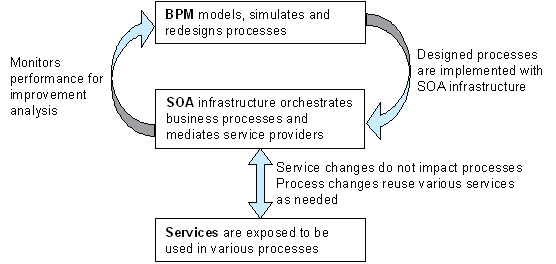Many organizations are looking to business process management (BPM) solutions to improve organizational effectiveness through the enablement of key process improvements.


Many organizations are looking to business process management (BPM) solutions to improve organizational effectiveness through the enablement of key process improvements.
Peter Falk has been a systems engineer in varying capacities with Wells Fargo since 1997. Falk has acted as the project manager and technical lead on several large outsourcing projects and on large and small-scale application upgrades. He currently manages a team of engineers who supports the document management group as well as other assorted applications in use at Wells Fargo’s Employee Service Center in Phoenix.
Wells Fargo is a diversified financial services company encompassing a collection of acquired financial institutions.
The first question most executives ask when I explain how we organize an improvement project is along the lines of “can we skip the process modeling?” They either believe all the processes have already been modeled or they know their employees are saturated from all the modeling or other consulting efforts. The reality is that I rarely find off the shelf materials (process and metrics models) that I can use without significant rework. In this article I want to make a case to model less, not more. Let’s start with why you model.
Modeling for the purpose of modeling.

For years, the pendulum has swung in favor of buying rather than building applications. However, business and technology triggers have shifted executives' focus from functional efficiency to business process adaptability. As the major suite vendors retool and refactor...
Are you a Process Manager/Operations Manager? Are you looking for BPM software that lets you depict your process visually and also allows you to modify the process in real time without any coding effort? To take full control and ownership of your business process look for this list of features from your BPM software.

The increasing success and ease of global competition places unprecedented pressures on enterprise revenues and profitability. The result is that enterprises are trying to do multiple things at once. Business units are told to be flexible and deliver new services quickly but at the same time to lower operational costs. Enterprises have mandates to continuously change and improve their processes, yet are also need to reuse existing business automation.
In a past BR Bulletin, the article “Business Rule Mining: Reasonable or Lunacy” presented how to determine if business rule mining would help your project. Each organization is faced with numerous legacy applications that have become “black boxes.” Business rule mining is a systematic approach of extracting essential intellectual business content (business rules) from packaged or legacy software, recasting them in natural language, and storing them in a source rule repository for further analysis or forward engineering.

These are exciting times. Business Process Management Suites (BPMSs) are becoming increasingly mature, and we are witnessing the emergence of the BPMS Center of Excellence (CE) in a number of large Fortune 1000 organizations. These are also challenging times. We are bombarded with confusing messages when it comes to the methodologies, tools, and overall culture that need to be developed within an organization to realize the full potential of the BPMS CE.
Business Process Management offers the ability to improve business processes significantly..
The same technology that supports BPM also can be used to implement composite applications and service-oriented architecture. Vollmer explores these additional capabilities and shows how they are changing the business landscape.

The world of BPMS is divided into BPEL-lovers and BPEL-haters, and the thing that BPEL-haters seem to hate most is that even the not-yet-final 2.0 version of the OASIS standard “excludes” human tasks. How can you have a “business process” execution language that cannot accommodate human-performed activities? “Out of scope”?! Are you kidding?
Of course, if you’re a BPEL vendor interested in selling to the BPM market, you have to integrate human tasks somehow, and they all do already. It’s just that they all do it slightly differently.
The world of BPMS is divided into BPEL-lovers and BPEL-haters, and the thing that BPEL-haters seem to hate most is that even the not-yet-final 2.0 version of the OASIS standard “excludes” human tasks. How can you have a “business process” execution language that cannot accommodate human-performed activities? “Out of scope”?! Are you kidding?
Everyone starts here.
You're looking for a way to improve your process improvement skills, but you're not sure where to start.
Earning your Business Process Management Specialist (BPMS) Certificate will give you the competitive advantage you need in today's world. Our courses help you deliver faster and makes projects easier.
Your skills will include building hierarchical process models, using tools to analyze and assess process performance, defining critical process metrics, using best practice principles to redesign processes, developing process improvement project plans, building a center of excellence, and establishing process governance.
The BPMS Certificate is the perfect way to show employers that you are serious about business process management. With in-depth knowledge of process improvement and management, you'll be able to take your business career to the next level.
|
Courses
|
|
|
|
Courses
|
|
|
|
Courses |
|
|
Business Architecture
|
|
|
|
Courses |
Certificate
|
|
Courses
|
|
|
|
Courses |
Certificate
|